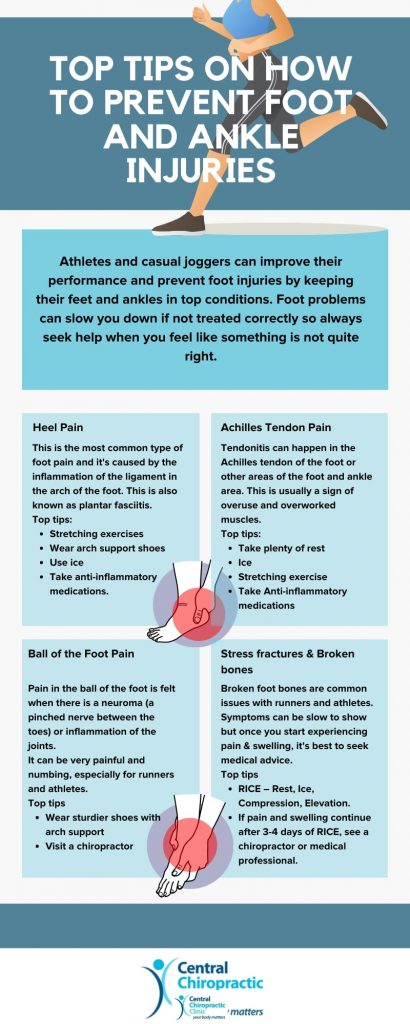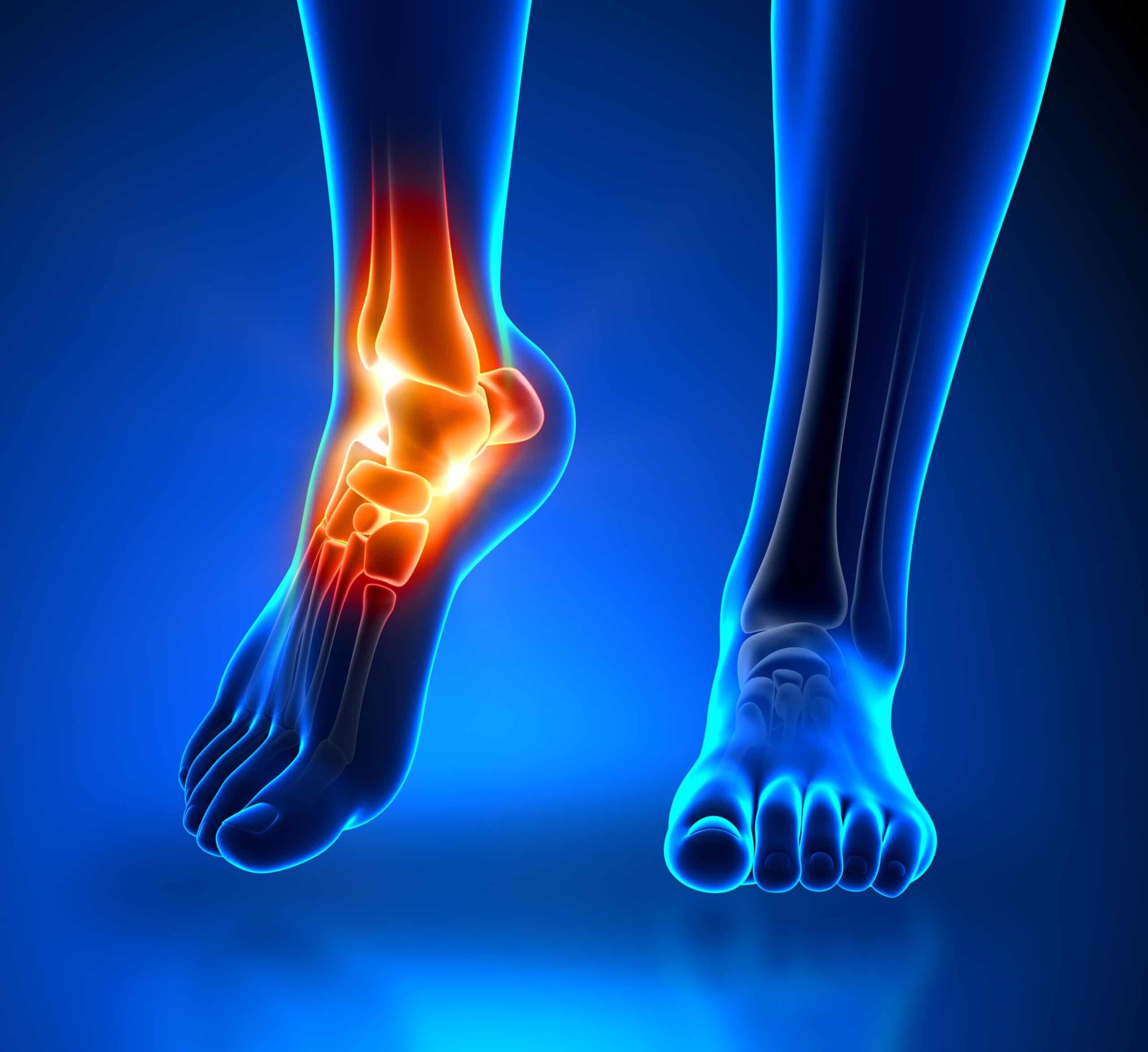
Your feet and ankles are among the most important — and most used — parts of your body.
Whether you’re walking, running, playing sports, or simply standing, your lower limbs take on a huge amount of pressure every day. With 26 bones, 33 joints, and more than 100 muscles, tendons and ligaments in each foot, even a small injury can have a major impact on your mobility and overall comfort.
Fortunately, there are simple steps you can take to reduce your risk of foot and ankle injuries. Whether you’re active every day or just starting to move more, these tips can help you protect your feet and stay pain-free.
1. Wear the Right Footwear
One of the most important things you can do to prevent injury is to wear the right shoes.
Footwear that fits poorly or doesn’t provide enough support can lead to a range of problems, including sprains, plantar fasciitis, and Achilles tendon pain.
Top tips for footwear:
- Make sure your shoes fit well — not too tight, not too loose
- Choose shoes with proper arch support and cushioning
- Avoid high heels or flat, unsupportive shoes for prolonged use
- Replace worn-out trainers or work shoes regularly
If you’re involved in specific sports or physical activities, consider footwear designed for that purpose. Running shoes, for example, offer different support than tennis shoes or hiking boots.
2. Stretch and Strengthen Regularly
Strong, flexible muscles and tendons are less likely to become injured.
Many foot and ankle problems are caused or worsened by tight calf muscles, weak ankles, or lack of balance. Incorporating a few minutes of stretching and strengthening into your routine can make a big difference.
Useful exercises include:
- Calf stretches – done against a wall to keep the Achilles tendon flexible
- Towel scrunches – to strengthen the small muscles in the feet
- Ankle circles and alphabet drawing – to improve mobility and control
- Balance exercises – such as standing on one leg to train stability
Try to stretch your lower legs and feet daily, especially if you’ve been sitting for long periods or doing physical activity.
3. Warm Up and Cool Down
Jumping straight into exercise without warming up is a common cause of ankle sprains and other soft tissue injuries. A proper warm-up helps increase blood flow, loosens the muscles, and prepares your body for movement.
Warming up tips:
- Spend 5–10 minutes doing light cardio like walking or cycling
- Add dynamic stretches such as leg swings or ankle rolls
- After activity, don’t forget to cool down and gently stretch your legs and feet to prevent tightness and stiffness later
4. Improve Your Balance
Poor balance increases the risk of falls and awkward movements that can lead to injury. Improving your balance doesn’t just protect your ankles — it also helps your knees, hips, and back.
Balance training ideas:
- Stand on one leg for 30 seconds, then switch
- Use a balance board or wobble cushion
- Try simple yoga or Pilates routines that focus on control and posture
Even just doing balance exercises 2–3 times a week can lead to noticeable improvements over time.
5. Avoid Overtraining
It’s easy to get excited about a new sport, gym routine or running plan — but doing too much too soon can lead to overuse injuries.
Stress fractures, tendonitis, and muscle strains are all common in people who push themselves too hard without giving their body time to adapt.
Avoid overtraining by:
- Increasing activity levels gradually (10% rule per week is a good guide)
- Taking rest days to allow recovery
- Cross-training to avoid repetitive stress (e.g., alternating running with swimming or cycling)
- Listening to your body — don’t push through pain
If you’re starting a new activity, consider getting advice from a physio or trainer to ensure you’re using good technique.
6. Treat Minor Problems Early
Don’t ignore early signs of foot or ankle discomfort. A mild ache today could become a bigger issue tomorrow if left untreated.
Resting, icing, or gently stretching a sore area can sometimes prevent a small problem from turning into a longer-term injury.
If pain persists for more than a few days, or gets worse with activity, it’s worth speaking to a physiotherapist or chiropractor. Prompt assessment and advice can make all the difference.
7. Maintain a Healthy Body Weight
Carrying excess weight places added pressure on the feet and ankles, increasing the risk of injury and wear-and-tear.
Maintaining a healthy weight through balanced diet and regular exercise can ease strain on your lower limbs and improve your overall joint health.
8. Consider Orthotics or Supportive Insoles
If you have flat feet, high arches, or known foot alignment issues, custom orthotics or over-the-counter insoles might help.
They can provide better support, improve posture, and reduce pressure on key areas. Speak to a healthcare professional if you think your footwear might be contributing to discomfort.
When to Seek Help
While many foot and ankle injuries can be prevented, accidents still happen.
If you experience sudden pain, swelling, bruising, or difficulty bearing weight on your foot or ankle, seek professional advice.
At Central Chiropractic Clinic, we offer a range of treatments to help with foot and ankle issues — including chiropractic care, physical therapy, and shockwave therapy for stubborn conditions like plantar fasciitis or Achilles tendon problems.
Protect Your Feet for the Long Term
Taking care of your feet and ankles now can prevent discomfort and limitations later in life.
With the right habits — from proper footwear to regular stretching — you can stay active, mobile and injury-free for years to come.
Book a consultation with our team today to find out how we can support your foot and ankle health.





